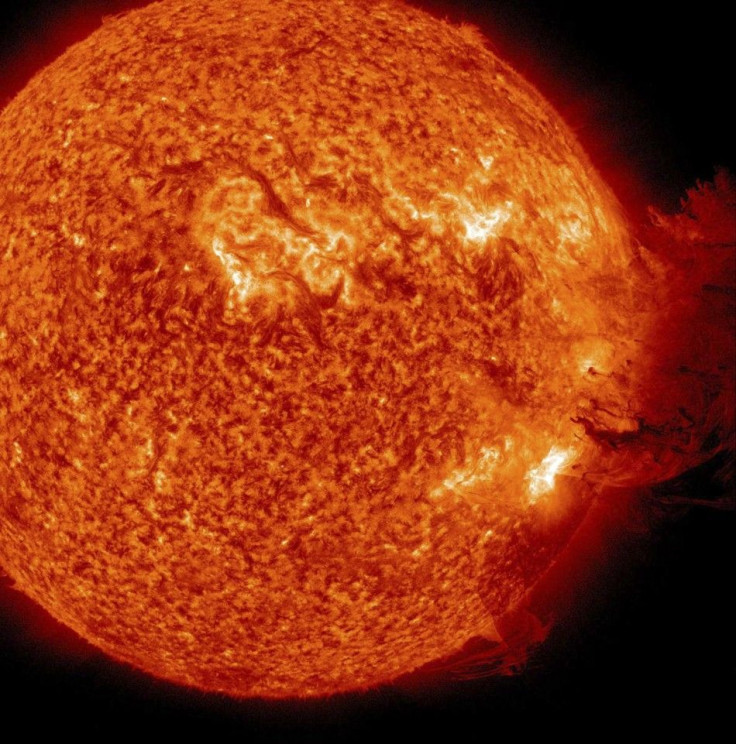Space Weather Forecast: Solar Winds From Sun’s Coronal Hole To Hit Earth
KEY POINTS
- A stream of solar winds is about to hit Earth
- The cosmic weather could cause geomagnetic unrest
- Severe geomagnetic unrests could affect various systems
A stream of solar winds escaping from a hole in the Sun’s atmosphere is expected to hit Earth within the next couple of days. The approaching solar weather could cause geomagnetic unrest in the planet.
The forecast regarding the incoming solar winds was provided by SpaceWeather.com. According to the cosmic weather forecasting site, streams of gaseous material is currently flowing out from a hole that formed on the surface of the Sun’s atmosphere, which is known as the corona.
The material escaping from the coronal hole might hit Earth on Tuesday (June 30) to Wednesday. If this happens, the highly charged particles of the solar winds will interact with Earth’s magnetic field, triggering geomagnetic unrest in the planet.
A minor geomagnetic unrest usually results in the formation of auroras or polar lights in the sky. SpaceWeather.com noted that this would most likely be the effect of the approaching solar winds on Earth.
However, if a major solar storm hits Earth, the planet could experience powerful geomagnetic unrest that’s capable of drastically affecting the planet’s magnetic field.
As explained by the Space Weather Prediction Center (SWPC) of the National Oceanic and Atmospheric Administration, geomagnetic activities occur due to disturbances in the Earth’s magnetosphere. These disturbances are usually triggered by the exchange of energy between Earth’s magnetic field and emissions from the Sun, such as solar winds and coronal mass ejections.
Disruptions in the Earth’s magnetosphere caused by solar storms can throw into disorder navigation systems, radio frequencies and electricity-based facilities and equipment on Earth. These could also affect the operations of satellites in low-Earth orbit.
“During storms, the currents in the ionosphere, as well as the energetic particles that precipitate into the ionosphere add energy in the form of heat that can increase the density and distribution of density in the upper atmosphere, causing extra drag on satellites in low-earth orbit,” the SWPC explained in a statement.
“While the storms create beautiful aurora, they also can disrupt navigation systems such as the Global Navigation Satellite System and create harmful geomagnetic induced currents in the power grid and pipelines,” the agency continued.

© Copyright IBTimes 2024. All rights reserved.





















